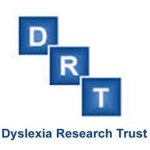This article was provided courtesy of Prof. John Stein and the Dyslexia Research Trust

One of the strongest risk factors for dyslexia is having a close relative with reading problems, ie having a family history of dyslexia. Comparing identical and nonidentical twins has shown that your genes account for about half your reading skills and upbringing and environment the other half (ie the heritability of dyslexia is c. 50%). But dyslexia is a complex cognitive problem that is several levels removed from the proteins whose synthesis genes control; so working out how the genetic factors interact with environmental factors to cause reading problems is difficult.
To do so requires large samples and powerful techniques. Many of you have contributed to our Oxford quantitative trait linkage (QTL) study analysing the whole human genome for linkage to dyslexia. We have collected nearly 400 families with at least 1 dyslexic child; this is the largest such study in the world so far. We detected a strong signal on the short arm of chromosome 6, where at least five other research groups have also found linkage27. But our strongest linkage was located on chromosome 1828. We were the first to report this location and we were able to replicate it in a second set of families collected in the US. Recently another research group has confirmed the same chromosome 18 site in a set of families collected in Australia.
After the identification of the chromosome 6 and 18 sites we have focussed our attention on pinpointing the actual genes responsible for reading impairment. Our initial strategy has been to specifically target genes that we knew to be expressed in the brain. The analysis of about 50 genetic markers within 15 brain-expressed genes located on chromosome 6 revealed strong associations between one particular gene, named KIAA0319, and low performance in most of our tests for reading, spelling, orthography and phonology. We replicated this result in a sample of US families and the same association was picked up in a completely independent analysis carried out at Cardiff University.
KIAA0319 has turned out to be involved with controlling the early development of the brain. It may also underlie the unfortunate tendency of the immune system of dyslexics to cause allergies, eczema etc.

The KIAA0319 gene and brain development
We’ve now shown that this gene probably regulates the synthesis of ‘signature’ molecules on the surface of nerve cells. These help to control how they migrate to their final positions during development of the foetal brain in utero. So it is likely that underexpression of this gene is why some nerve cells in dyslexics fail to move to their correct positions during brain development, as has been found in dyslexic brains examined post mortem.
Next to nothing was known about KIAA0319 when we first identified it as a possible dyslexia susceptibility gene. Therefore, we started by asking some basic questions to see how it could be connected to dyslexia. All we knew from publicly available databases was that the gene is expressed in the brain. First therefore, we wanted to know in greater detail when and where expression occurs.
In collaboration with Andy Copp at UCL we looked at the expression pattern of the KIAA0319 gene in mouse and human embryos at different developmental stages. Interestingly, we found that it is expressed only in selected regions of the brain and particularly during the early migration of neurones taking up their correct positions in the cerebral cortex during development. KIAA0319 seems to be turned on during the early development of the cerebral cortex, particularly in regions such as the occipital and parietal cortex29. These are areas whose visual input is mainly magnocellular and which play important roles in the visual skills required for reading.
During early brain development neurons migrate outwards from around the hollow ventricles in the core of each hemisphere to form the 6 layers on the surface that make up the cerebral cortex. In collaboration with Joe LoTurco at the University of Connecticut we were able to show that if we switched off the KIAA0319 gene specifically in the population of neurons ready (but not yet started) to migrate, they ceased to migrate at all, probably because they lost their proper communication with the neighbouring cells that should guide them.
In dyslexia however expression of the KIAA 0319 gene is not eliminated, but 40% reduced. This causes impaired neuronal migration as had been found more that 20 years ago when Albert Galaburda showed ectopias and microgyria in dyslexic brains post-mortem. Thus, our hypothesis is that the KIAA0319 gene influences reading ability by affecting neuronal migration, particularly of magnocells, early in development. This would explain the irregularities of neuronal migration that are seen in the development of the parts of the cerebral cortex important for reading.
The KIAA0319 genetic risk variant
One of the questions that still remains is what is the actual change in the KIAA0319 gene that contributes to dyslexic problems. What we have found so far is that a particular DNA sequence has a significantly higher frequency (up to 28%) in children with severe dyslexia compared to the general population (12%). Using an in vivo cell model we have shown that in the presence of this sequence the level of transcript (the direct gene product and precursor of the protein) is reduced by about 40%. Thus, we think that the risk version of KIAA0319 does not alter the protein it produces, but instead it reduces its level.
We are now searching for the actual genetic variants within this DNA risk sequence responsible for this effect. Finding the causative mutation will be very important not only to illuminate the mechanisms whereby some people’s brains find it difficult to learn to read, but also to improve diagnosis. Once we identify this mutation it should be easy to test whether or not a particular individual carries it, for instance in children with a family history of dyslexia, and then to target help for these children from a much earlier age.
We are now also conducting an extensive characterisation of the KIAA0319 protein. We are studying where it is distributed in the cell, whether it interacts with other proteins and what is its function. It seems to be localised at the plasma membrane and is mainly exposed outside the cell. The most distinctive structures of the protein are five domains (called PKD) which have been shown to be responsible for cell-cell interactions. These findings are in very good agreement with our hypothesis that KIAA0319 helps to control neuronal migration by mediating proper signalling and interaction between cells.
We have also discovered that the KIAA0319 protein exists in different forms that do not stay at the cell surface but may be secreted out of the cells completely, to influence other cells or be transported to other compartments within the same cell. These findings suggest that KIAA0319 might regulate the activity of other genes either by transporting information to other cells or to the nucleus of the same cell. We have also identified some other proteins that bind to KIAA0319 and we are now studying what the biological functions of these interactions are within and between cells.
Also later in life, these cell signature molecules that are controlled by KIAA 0319 probably help neurones and antibodies to recognise each other. This might explain why magnocellular neurones tend to fail to make effective connections in dyslexics, and why many dyslexics suffer from immune anomalies such as allergies and eczema. But KIAA downregulation does not seem to affect general intelligence; so it is likely to specifically underlie the development of the specialised temporal perceptual processes required for reading, possibly via controlling the development of magnocellular neurones. We’re at a very exciting juncture. Watch this space over the next few years!
In a large Finnish family a mutation in a gene on chromosome 15 (christened DYX1C1 because it was the first dyslexia gene to be discovered) is definitely associated with their dyslexic problems. However in our Oxford families when we looked at the DNA of over 1000 individuals we found that those who had this fairly common mutation actually had slightly better orthographic scores than those with the commonest variant. This suggests that the Finns have dyslexic problems because of a complex interaction of this C15 gene with another, as yet unidentified, one that is more important in the British.
Left Handedness & Dyslexia?
Dyslexia is strongly hereditary, and so is whether you are right or left handed. Furthermore dyslexia is said to be commoner in people who have weakly established lateralisation, ie if they are neither strongly right or left handed. So we have been using genetic linkage techniques in our dyslexic families to look for chromosomal sites that may be linked to left compared with right hand skills as well as reading. Ours was the first genetic screen covering all the human chromosomes that has been carried out for handedness.
But we did not find any special relationship between reading problems and handedness; relative hand skill was the same in our dyslexic families as in the population at large. There wasn’t a strong tendency for either mixed handedness or to non-right handedness. Nevertheless we did find a very strong genetic linkage of relative hand skill to a site on chromosome 2, although this was not strongly linked to reading ability30.
Even though non right handedness did not seem to be strongly associated with reading problems, overall motor dexterity did correlate with reading ability. The faster the subjects were at moving pegs from one set of holes to another with either hand, the better they were at reading. Thus accurate motor timing and coordination seem to be conducive to good reading.
Another condition which is thought to be associated with non-right handedness is schizophrenia, and both traits are often accompanied by lack of the normal brain asymmetry favouring the left side. A similar site on chromosome 2 to that which we found was linked to handedness, seems also to be linked to schizophrenia/ schizoaffective disorder.
Just recently we’ve found that this shared linkage is only seen in chromosomal regions inherited from the father. Thus this site on Chromosome 2 inherited from the father may contain genes that affect the lateralisation of brain development. This may contribute to non-right handedness, weak language development and to schizophrenic traits, but only indirectly to reading.
Future genetic directions
This is an exciting time for dyslexia research. For the first time, thanks to the discovery of the KIAA0319 gene, we have the opportunity to study the biological and molecular mechanisms underlying the causes of dyslexia. The KIAA0319 protein is proving to be a very good candidate thanks to its role in neuronal signalling and migration, but its function may go beyond the regulation of cortex development. This hypothesis can be tested by comparing the brains of carriers and non-carriers of the risk genetic variants using neuroimaging. This approach should reveal if the KIAA0319 risk sequence is linked to any recognizable differences in brain structure.
We are talking about a complex condition; at least 10 genetic factors are thought to be involved. But this is considerably less than the 300 or so genes, each with a very small effect, that seem to be involved in schizophrenia. By studying in detail the function of KIAA0319 and its interaction with other proteins we should be able to identify other factors that contribute significantly. We can then test whether the genetic sequences of these interacting proteins show any association with the reading abilities of our collection of families.
Chromosome 18
We have been carrying out the same functional characterisation that we have described here for the KIAA0319 gene, for the chromosome 18 candidate gene. The specific one involved here is probably a melanocortin receptor gene. Like many genes it is involved in a large number of seemingly different functions: pigmentation, reactions to stress, energy balance and obesity and possibly in the metabolism of omega 3 fatty acids. This allele may make dyslexics particularly vulnerable to dietary deficiency of omega 3 fatty acids that are found only in fish oils. Remarkably therefore, simply consuming more fish oil can often help children to greatly improve their reading probably because this makes their magnocellular neurones work better.
The Future
Having a collection of different susceptibility genetic variants will open the door to exciting new studies of mechanisms. We will be able to test which combinations of genetic variants increase the risk of developing dyslexia most. We can test for any correlations between genetic background and subgroups of dyslexic individuals classified on the basis of their visual/orthographic or auditory/ phonological skills, or their sensory or motor control skills. Likewise, we will also be able to test by neuroimaging whether different genetic factors correspond to specific changes in the brain either at the neuroanatomical or functional levels. Eventually this research will lead to a better definition of dyslexia and will provide better diagnostic tools to identify different categories of dyslexic individuals and more targeted intervention strategies.




















Fascinating. My daughter has been diagnosed with dyslexia, but she also suffers from allergies and has eczema. There appears to be a strong family history of dyslexia on my husbands side of the family.
That’s way more clever than I was extecping. Thanks!